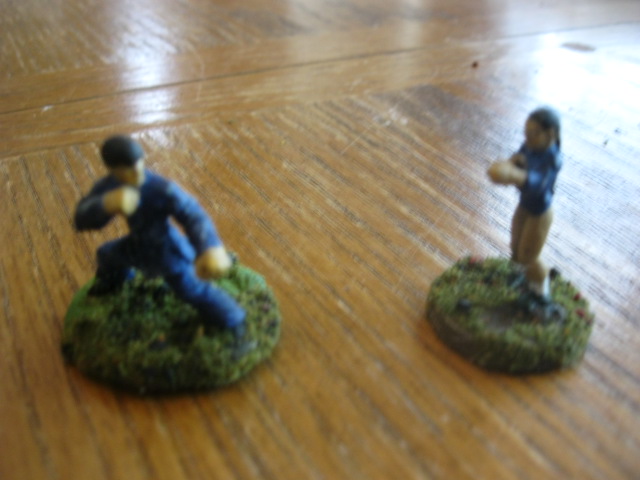I found this both absurd and hilarious and posted this video, partially in response. It dates from 1897 and shows Ashanti warriors demonstrating a "knife dance" at an exhibition that year in France. (The history of such exhibitions and museums, particularly in the pre-modern media world, is fascinating.)
This led to a discussion about whether or not and if so how to factor Capoeira, an Afro-Brazilian dance martial art with roots in Angola, and other martial arts into a miniature wargame. Should units that depict warriors or soldiers that have studied martial arts get higher stats and ratings in hand to hand combat than those who have not?
Years previously, there was a discussion on this on the Colonial Wargames Yahoo group and I argued furiously over this issue until the moderator cut the thread. It's a topic I feel I know more about than many and have extra insight into --so, my two cents . . .
First, "Martial Arts" and "Fighting Skills" are two different but overlapping things. If taught badly and out of context, studying martial arts can make you a WORSE fighter. But if taught well, then they can make a good fighter a better fighter. And to explore the topic more deeply requires an arbitrary defining of terms and splitting hairs. Would, for instance, bayonet drills or training be considered a martial art? I probably would not unless it involved an ever upward path for continuous development but if others disagree, I am not inclined to spend much time arguing with them over it.
 |
| A selection of 1980s era figures painted by me. Again the exact manufacturer is long forgotten. |
 |
| A more recently manufactured figure from Hasslefree figures. |
Therefore, in my opinion, since people who have studied are martial arts are not necessarily better fighters than many others who have not, I would not give wargames figures a bonus for "knowing martial arts." You should just factor it into their close combat ratings along with several other factors.
 |
| These were originally manufactured by Obelisk Miniatures as part of their very interesting "tong" range, a range based on some classic photos of turn of the century San Francisco Chinatown. The range has been bought and is currently available from Tsuba Miniatures . |

So, no, don't give your Angolan warriors a bonus because they study Capoeira. Give them a bonus because they are awesome fighters who happened to have studied Capoeira.
Seriously, there are many, many people out there walking around with martial arts credentials, convinced in their own minds that they are awesome superhuman killing machines who have no idea how to fight or what real violence looks like.
Another interesting thing along those lines is Wim Demeere, a prominent Tai Chi teacher in Belgium, wrote a blog post comparing martial arts and military combat. One key idea in it was "Military units are trained to fight as a team. Martial artists are trained to fight as individuals."You can read the whole essay HERE if you'd like. It's long but quite good. The part on teamwork is near the bottom of the page.
Similarly, there used to be a former US Navy SEAL who was selling instructional videos on hand-to- hand combat and related things to the civilian market. (I forget his name. The videos came from Panther Productions.) In an interview he admitted, "Actually the Navy SEALS often don't focus much on unarmed combat. In the Navy SEALS they feel if you find yourself in combat unarmed you screwed up big time somewhere."

Most who know about the connection between martial arts study and military effectiveness will admit that one of the biggest reasons to teach modern soldiers martial arts is that it raises their morale, not that it raises their direct combat effectiveness. As Nuno Pereira pointed out in our discussion, "If they are Elite they are trained for unit combat and stay cohesive. They are individually better than other troops but their strength is both psychological and physical."
 |
| More Hasslefree Figures miniatures |



No comments:
Post a Comment